Why you can trust Tom's Hardware
Comparison Products
We tested WD’s My Passport SSD against some of the best portable SSDs on the market. To cover TB3 and USB 20 Gbps competitors, we included drives like the Samsung X5, SanDisk Extreme Pro (v2), and WD Black P50.
For the more budget-focused 10 Gbps competitors, we threw in the LaCie Rugged SSD, SanDisk Extreme Pro (v1), Samsung T7 Touch, and Crucial X8.
Transfer Rates – DiskBench
DiskBench is a storage benchmarking tool that allows us to test the transfer or copy performance of a storage device with real data. We test external drives with three file transfers that consist of 25GB of photos (10GB of jpgs and 15GB of RAW photos), 50GB of movies, and 25GB of documents. First, we transfer each folder from a 1TB NVMe SSD to the external device; then, we follow up by reading a 3.7GB 7-zip file and a 15GB movie back from the device.
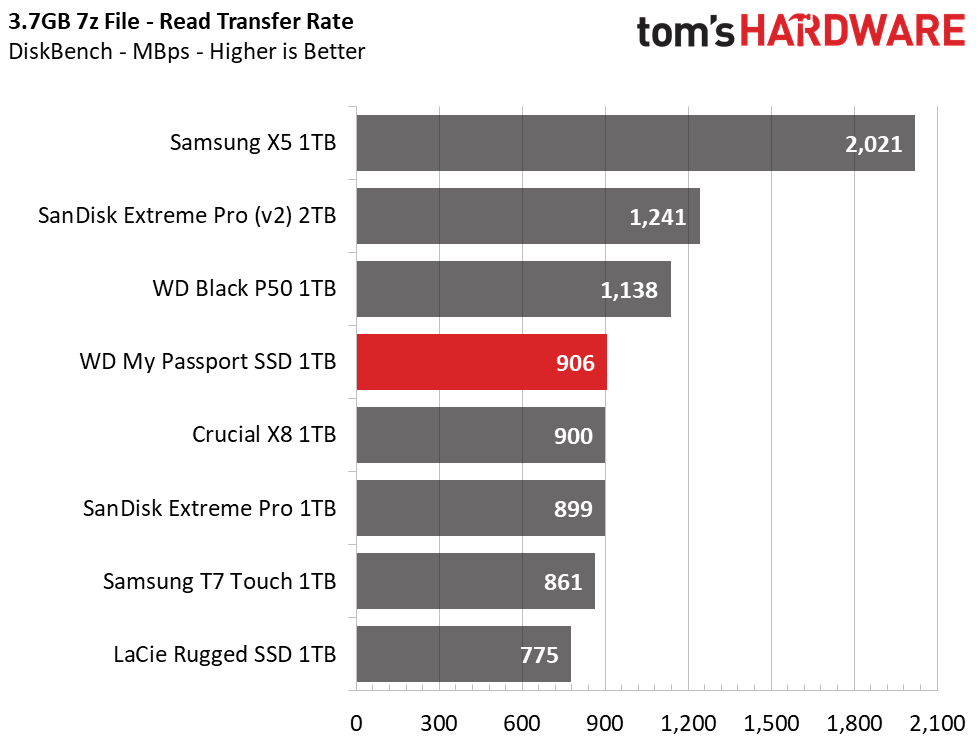

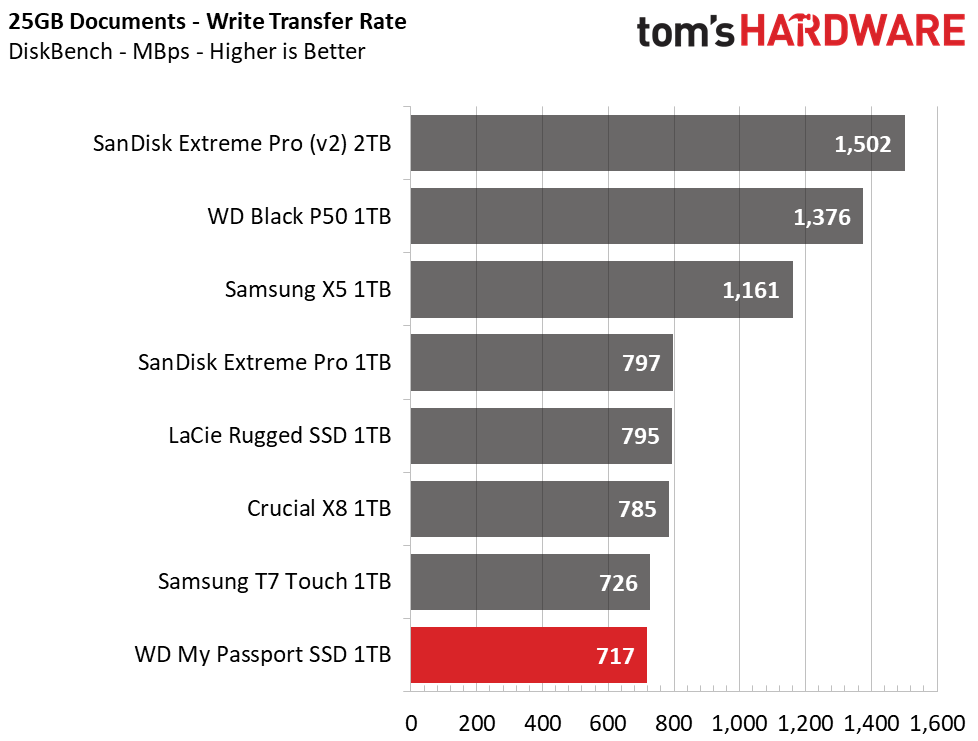


The WD My Passport SSD serves up fast performance when it reads back large files, but it falls behind the test pool during the large file copy tests. This is due in part to its small SLC cache, affording the Samsung T7 Touch a victory. The WD My Passport SSD isn’t the fastest pick for moderate datasets – it fell to the bottom of the pack during these tests.
Trace Testing – PCMark 10 Storage Test: Data Drive Benchmark
PCMark 10 is a trace-based benchmark that uses a wide-ranging set of real-world traces from popular applications and everyday tasks to measure the performance of storage devices. To test drives that store files rather than applications, we utilize the Data Drive Benchmark.

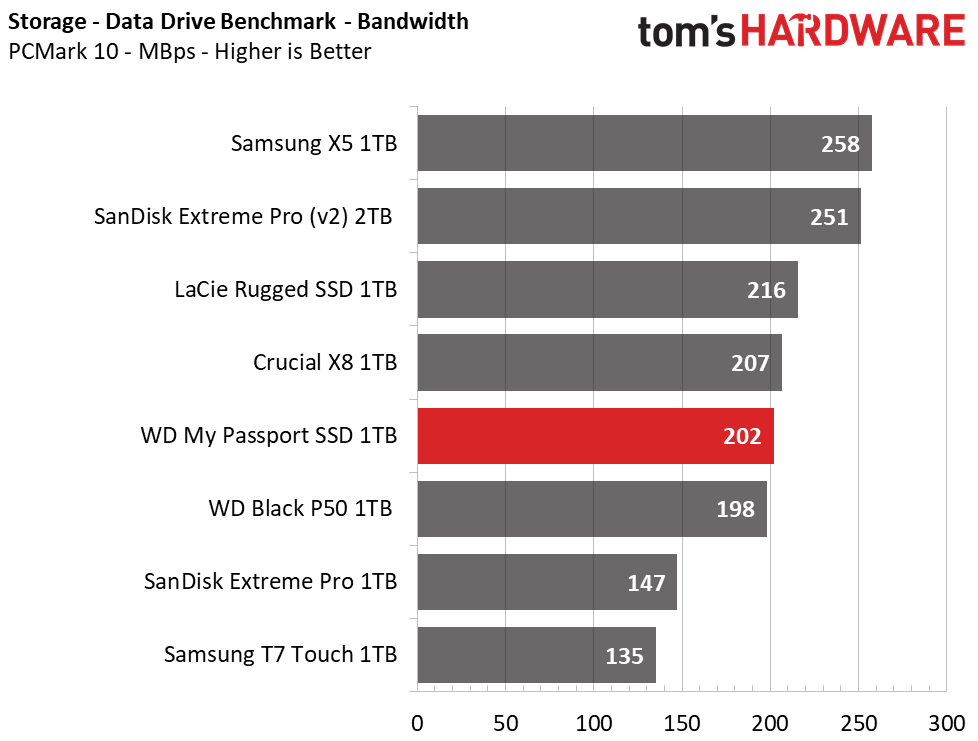
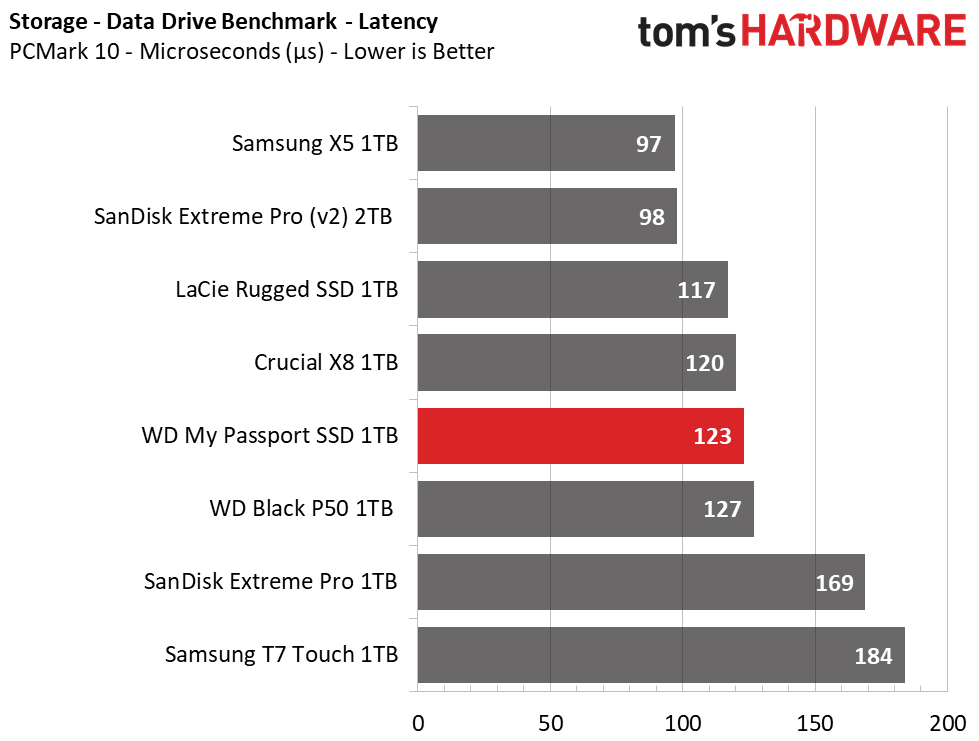
WD’s My Passport SSD takes fifth place in PCMark 10’s Data Drive benchmark, scoring similar to the Crucial X8 and WD Black P50. The WD My Passport SSD proves responsive for a 10 Gbps device, but lags most TB3 NVMe SSDs like Samsung’s X5 or high-end 20Gbps competition like SanDisk’s Extreme Pro v2.
Synthetic Testing - ATTO / iometer
iometer is an advanced and highly configurable storage benchmarking tool while ATTO is a simple and free application that SSD vendors commonly use to assign sequential performance specifications to their products. Both of these tools give us insight into how the device handles different file sizes.
Get Tom's Hardware's best news and in-depth reviews, straight to your inbox.
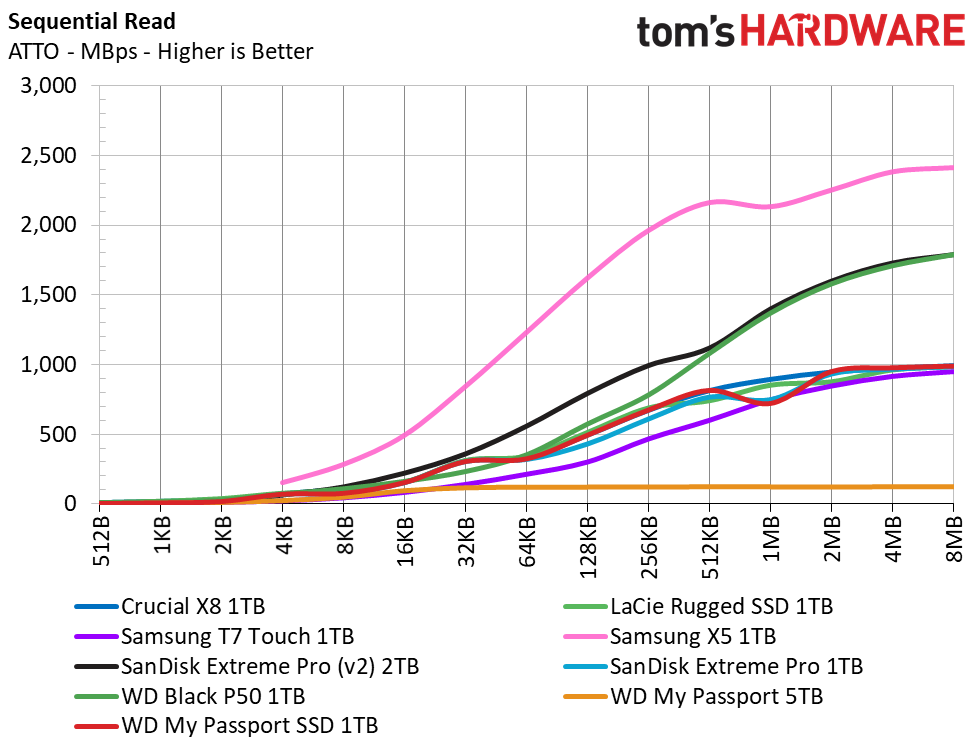

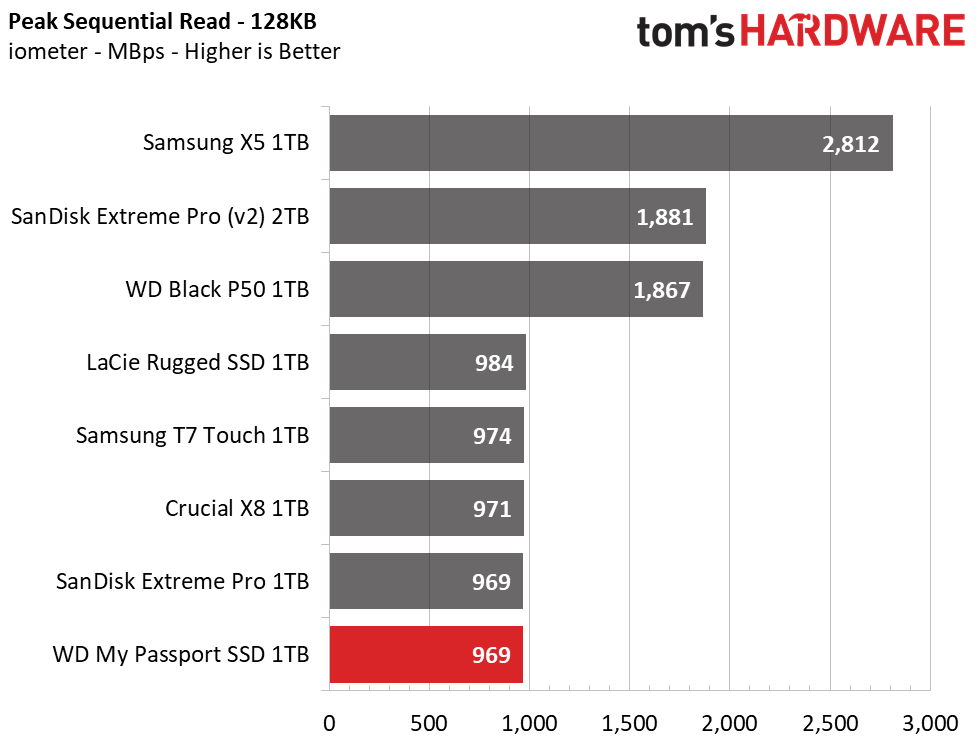

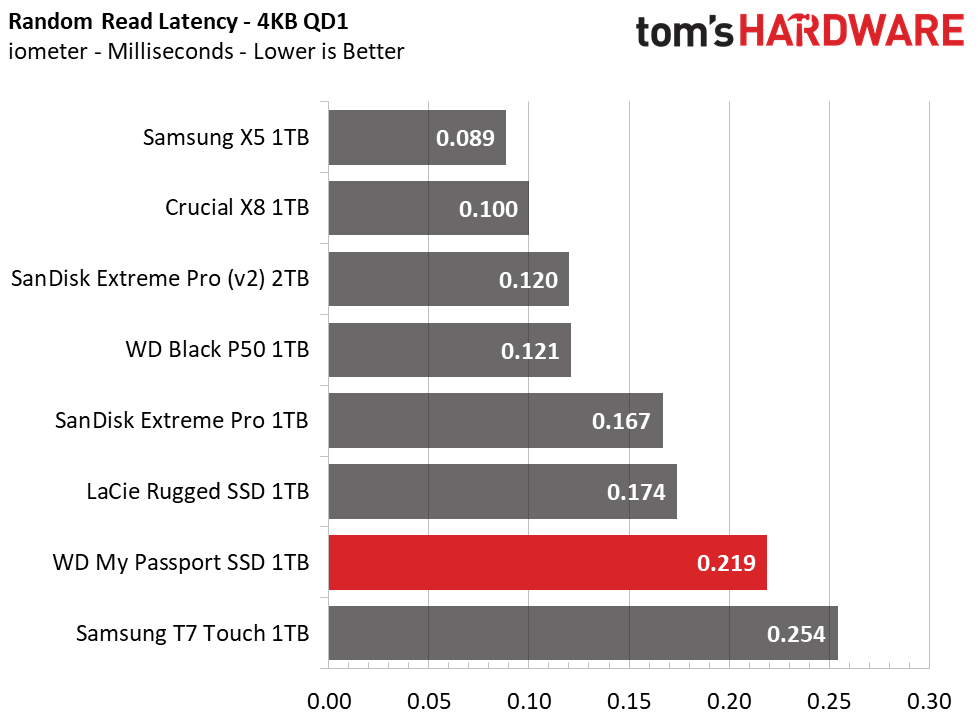


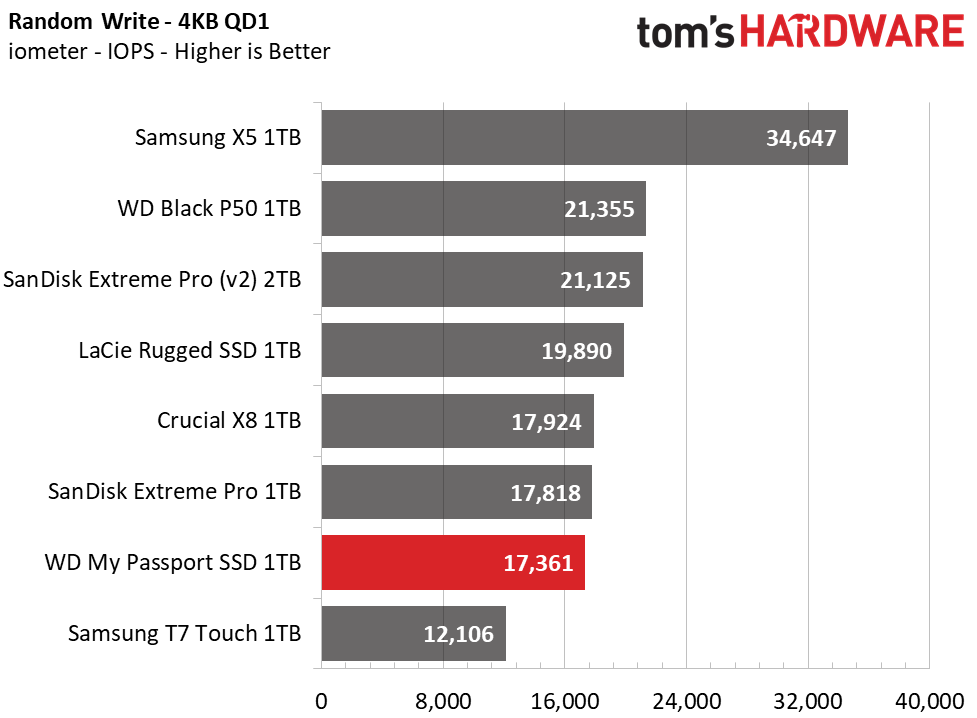
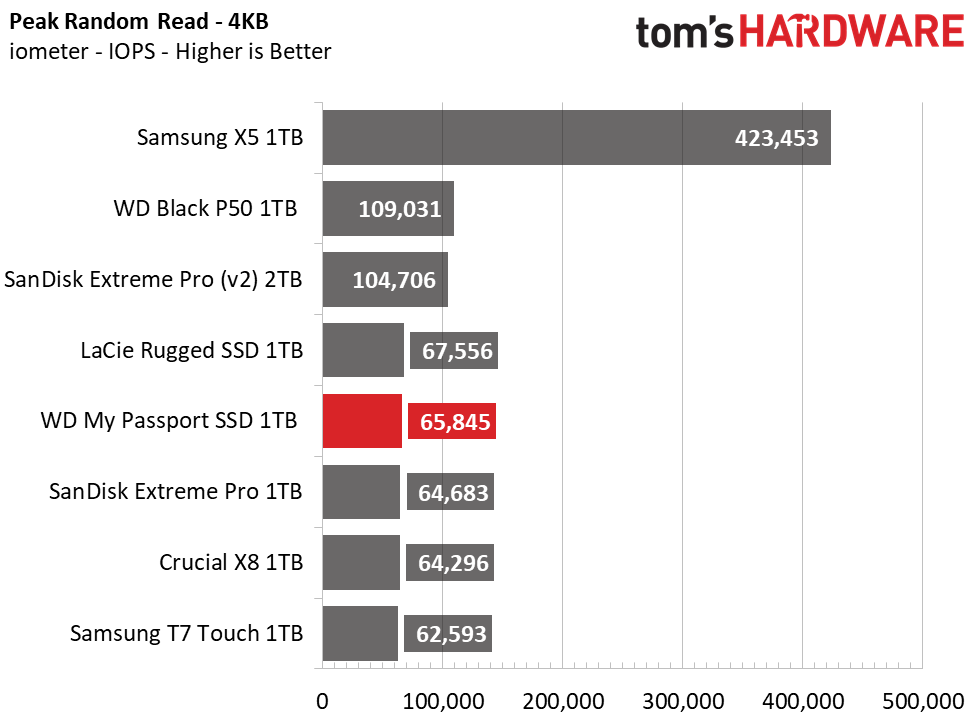

The My Passport’s sequential performance at a QD (queue depth) of 1, which represents the most common data accesses in operating systems, is in line with most of its competition. However, the WD My Passport SSD is faster with small files than the Samsung T7 Touch.
The My Passport SSD doesn't quite hit its rated specs when we scale up the QD to see how the drive responds during heavier workloads. The WD responds much faster to random requests than Samsung’s T7 Touch, but the Crucial X8 is faster. The Crucial SSD packs QLC flash that has a reputation for slower performance, but thanks to its DRAM-based architecture, it processes random read requests nearly twice as fast as the My Passport.
Sustained Write Performance, Cache Recovery, & Temperature
Write speed and temperature are two important and inter-related metrics for external devices. Official write specifications are only part of the performance picture. Most SSDs implement a write cache, a fast area of (usually) pseudo-SLC programmed flash that absorbs incoming data. Sustained write speeds can suffer tremendously once the workload spills outside of the cache and into the "native" TLC or QLC flash.
We use iometer to hammer the SSD with sequential writes for 15 minutes to measure both the size of the write cache and performance after the cache is saturated. We also monitor cache recovery via multiple idle rounds and the temperature of the drive via the S.M.A.R.T. data and an IR thermometer to see when (or if) thermal throttling kicks in and how it impacts performance.
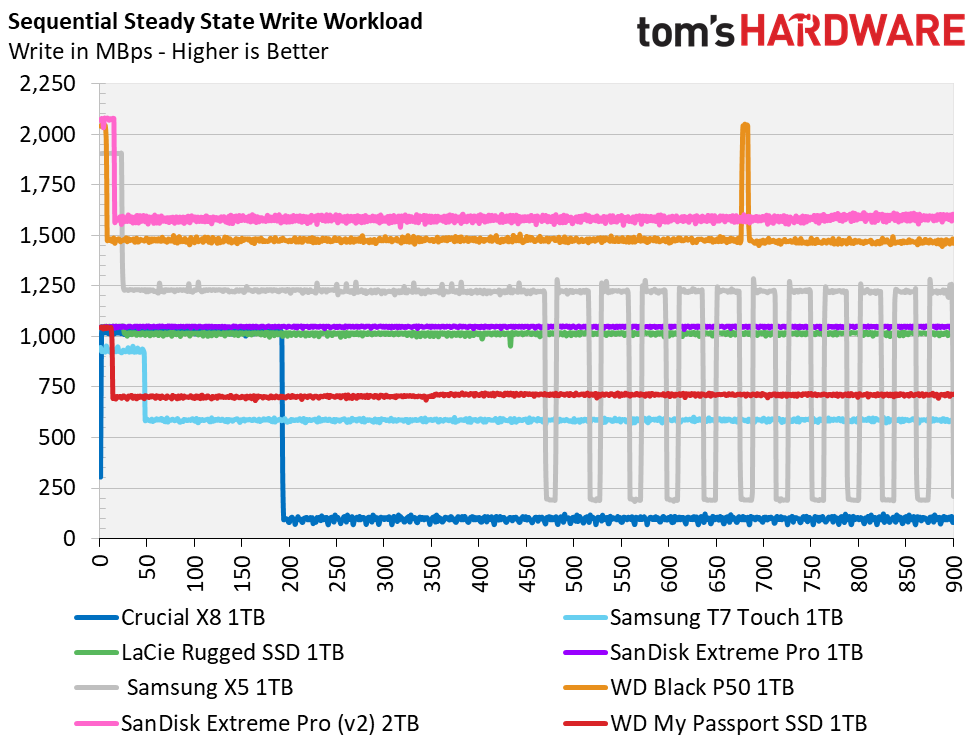

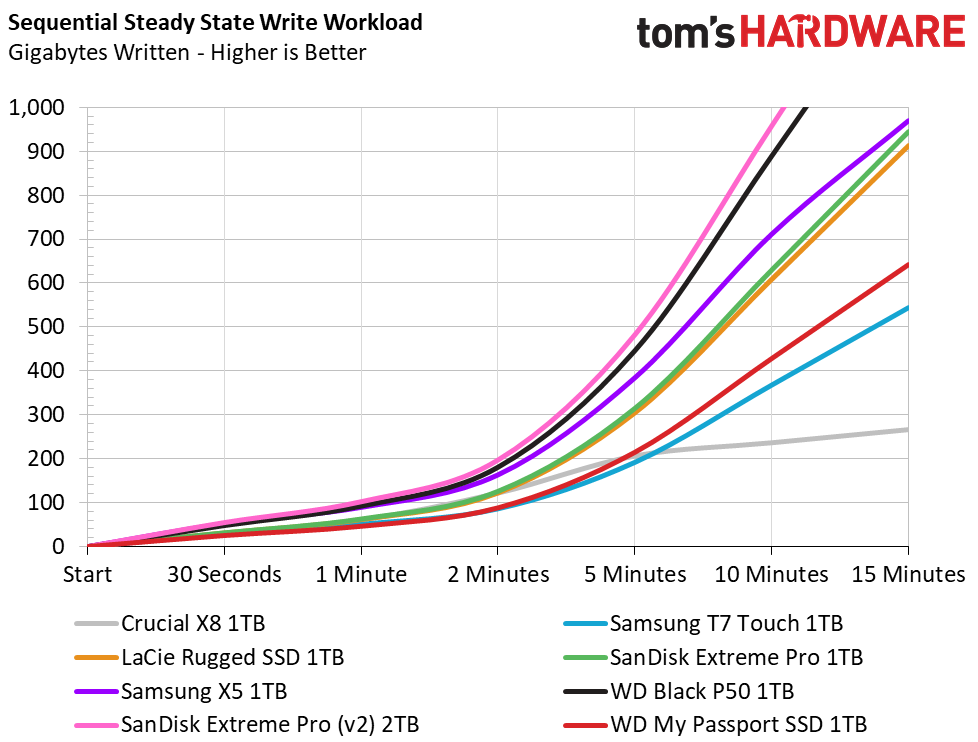
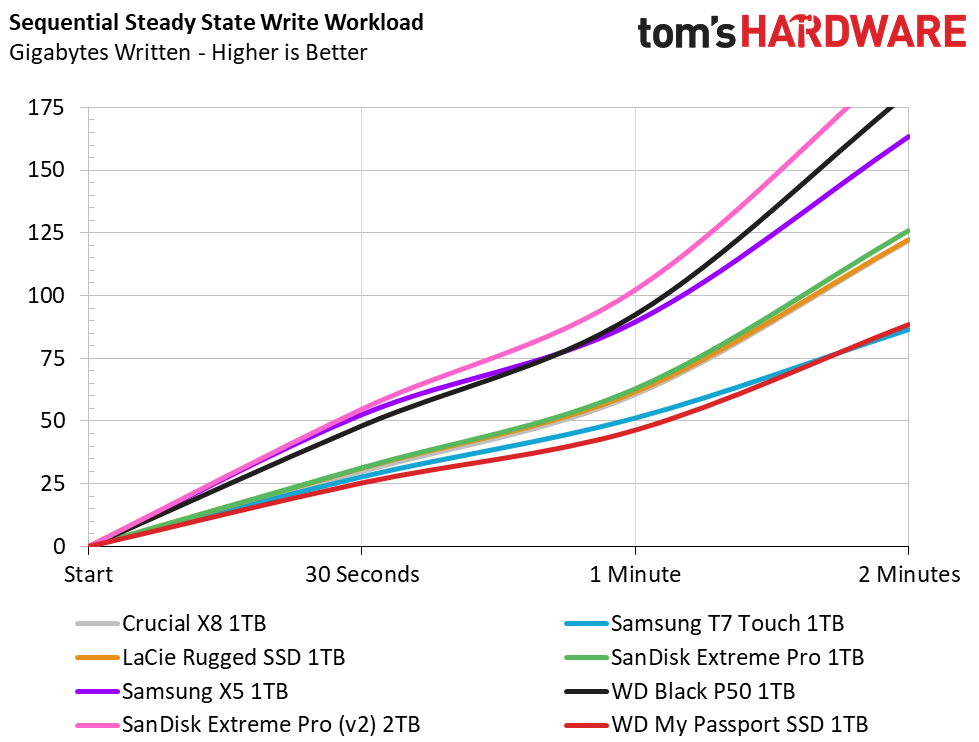

Like the standard Blue SN550, the Blue SN550E comes with a small static SLC cache that measures just 12GB on our 1TB sample. After the SLC cache fills, write performance degrades to an average rate of 710 MBps until the drive is full. The small static cache recovers immediately after we stop writing data to the drive.
The Crucial X8 and Samsung T7 Touch get the jump on the My Passport when we first start to fill the drives. This is due to their large dynamic cache capacity, but the My Passport takes the lead after writing 200GB of data thanks to its much better performance during sustained workloads.
While the SSD’s S.M.A.R.T. data reported temperatures in the mid-50s (Celsius), our IR thermometer measured no more than 45C on the surface of the My Passport SSD after the device sustained well over 400GB of write transfers. It’s reasonable to say the drive will stay within an acceptable temperature range during moderate use.
MORE: Best SSDs
MORE: How We Test HDDs And SSDs
MORE: All SSD Content

Sean is a Contributing Editor at Tom’s Hardware US, covering storage hardware.
-
cma6 "An ASMedia ASM2362 USB 3.2-to-PCIe 3.0 x2 NVMe SSD chip bridges the link between the internal NVMe SSD and the host. "Reply
Does this mean that one must have USB 3.2 available on one's system? -
seanwebster Reply
Only if you want full performance.cma6 said:"An ASMedia ASM2362 USB 3.2-to-PCIe 3.0 x2 NVMe SSD chip bridges the link between the internal NVMe SSD and the host. "
Does this mean that one must have USB 3.2 available on one's system?